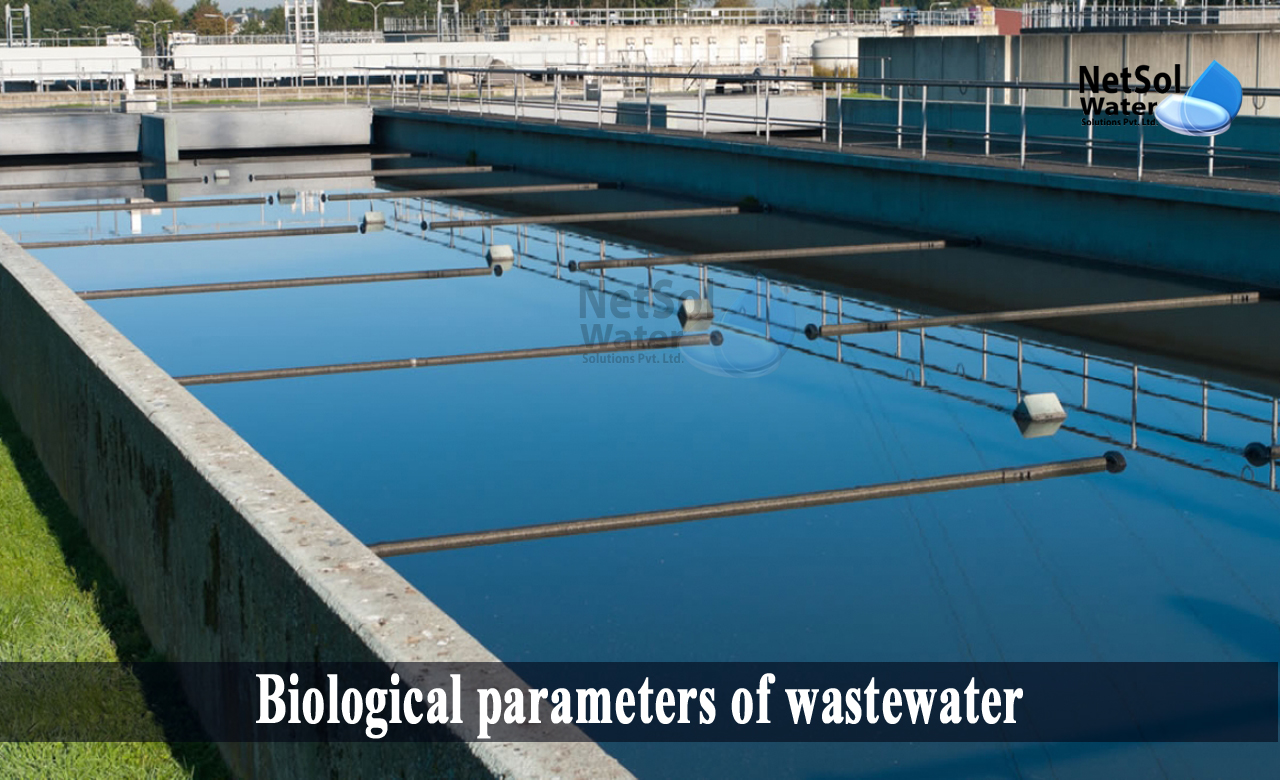What are the Biological parameters of wastewater?
Sewage contains massive amounts of microorganisms. The presence of these microorganisms influences the biological properties of sewage or other wastewaters. It contains a plethora of microorganisms.
The majority of them are not only harmless but also beneficial to humans because they aid in the biological treatment of sewage, to render it harmless.
Biological parameters of wastewater
Biochemical Oxygen Demand (BOD)
The biochemical oxygen demand (BOD) is a measurement of the amount of oxygen required to oxidize the organic matter in a sample, via the action of microorganisms found in wastewater. It is the most commonly used organic parameter in both wastewater and surface water.
It is defined as the amount of oxygen required for microorganisms to perform biological decomposition of dissolved solids or organic matter in wastewater, under aerobic conditions at standard temperature.
Various organisms that help in biological decomposition of wastewater
Wastewater contains the following microbes:
· Bacteria
· Protozoa
· Mushrooms
· Virus
· Seaweed
· Rotifers
· Nematodes
· Molds (or fungi)
Fungi
Fungi are unicellular, non-photosynthetic plants that can grow in cold and acidic environments. They thrive in a wide pH range (4 to 10) and modify the pH by producing organic acids and ammonia.
A spore is the reproductive stage of fungi. Wind currents carry spores long distances in the air. Most fungi spores do not germinate in the absence of a suitable environment.
Viruses
Viruses are pathogens that infect both plant and animal cells. They are ultramicroscopic, obligate intracellular parasites that cause host cell destruction or impairment.
They are small enough to pass through an ultra-microscopic filter and range in size from 10 to 500 millimicrons.
Bacteria
Bacteria are single-celled microorganisms with rigid cell walls that consume soluble food, and use it to create new cells.
Bacteria are classified into four types: saprophytic bacteria, parasitic bacteria, pathogenic bacteria, and non-pathogenic bacteria.
Sewage bacteria
These bacteria can be found in sewage, containing both anaerobic as well as aerobic bacteria.
The aerobic process promotes organic matter oxidation. Peptococcus and Clostridium are examples of anaerobic bacteria, while Nocardia and Nitrosomonas are examples of aerobic bacteria.
Protozoa
Protozoa are in charge of maintaining balance in biological treatment processes. They aid in the purification of streams and the balancing of different groups of microorganisms. Pathogenic protozoa include Giardia and Balantidium coli.
Algae
Algae are well known for their ability to reproduce quickly under certain conditions. They cause algal blooms on the surface of the water.
They pollute the water and cause odour and taste issues. As a result, the value of water for supply purposes is reduced.
Services for wastewater treatment from Netsol Water
A wide variety of wastewater treatment options are offered by Netsol Water, including phosphorus removal, odour control, clarifying, sludge dewatering, chlorination/de-chlorination, physico-chemical and biological treatment of wastewater, etc.
Netsol Water is Greater Noida-based leading water & wastewater treatment plant manufacturer. We are industry's most demanding company based on client review and work quality. We are known as best commercial RO plant manufacturers, industrial RO plant manufacturer, sewage treatment plant manufacturer, Water Softener Plant Manufacturers and effluent treatment plant manufacturers. Apart from this 24x7 customer support is our USP. Call on +91-9650608473, or write us at enquiry@netsolwater.com for any support, inquiry or product-purchase related query.



